
The North Pole, also known as the Geographic North Pole, Terrestrial North Pole or 90th Parallel North, is the point in the Northern Hemisphere where the Earth's axis of rotation meets its surface. It is called the True North Pole to distinguish from the Magnetic North Pole.
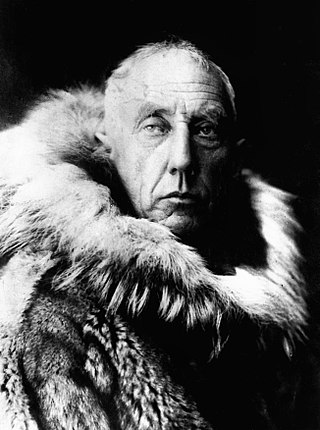
Roald Engelbregt Gravning Amundsen was a Norwegian explorer of polar regions. He was a key figure of the period known as the Heroic Age of Antarctic Exploration.

Robert Edwin Peary Sr. was an American explorer and officer in the United States Navy who made several expeditions to the Arctic in the late 19th and early 20th centuries. He is best known for, in April 1909, leading an expedition that claimed to be the first to have reached the geographic North Pole.
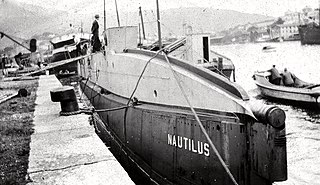
USS O-12 (SS-73) was an O-class submarine of the United States Navy. These later O-boats, O-11 through O-16, were designed by Lake Torpedo Boat to different specifications than the earlier Electric Boat designs. They performed poorly as compared to the Electric Boat units, and are sometimes considered a separate class. The ship was launched in 1917 and entered service with the Navy in 1918 in the Panama Canal Zone.

Fram ("Forward") is a ship that was used in expeditions of the Arctic and Antarctic regions by the Norwegian explorers Fridtjof Nansen, Otto Sverdrup, Oscar Wisting, and Roald Amundsen between 1893 and 1912. It was designed and built by the Scottish-Norwegian shipwright Colin Archer for Fridtjof Nansen's 1893 Arctic expedition in which the plan was to freeze Fram into the Arctic ice sheet and float with it over the North Pole.

The Norge was a semi-rigid Italian-built airship that carried out the first verified trip of any kind to the North Pole, an overflight on 12 May 1926. It was also the first aircraft to fly over the polar ice cap between Europe and America. The expedition was the brainchild of polar explorer and expedition leader Roald Amundsen, the airship's designer and pilot Umberto Nobile and the wealthy American adventurer and explorer Lincoln Ellsworth who, along with the Aero Club of Norway, financed the trip, which was known as the Amundsen-Ellsworth 1926 Transpolar Flight.

Sir George Hubert Wilkins MC & Bar, commonly referred to as Captain Wilkins, was an Australian polar explorer, ornithologist, pilot, soldier, geographer and photographer. He was awarded the Military Cross after he assumed command of a group of American soldiers who had lost their officers during the Battle of the Hindenburg Line, and became the only official Australian photographer from any war to receive a combat medal. He narrowly failed in an attempt to be the first to cross under the North Pole in a submarine, but was able to prove that submarines were capable of operating beneath the polar ice cap, thereby paving the way for future successful missions. The US Navy later took his ashes to the North Pole aboard the submarine USS Skate on 17 March 1959.

The British Arctic Expedition of 1875–1876, led by Sir George Nares, was sent by the British Admiralty to attempt to reach the North Pole via Smith Sound.
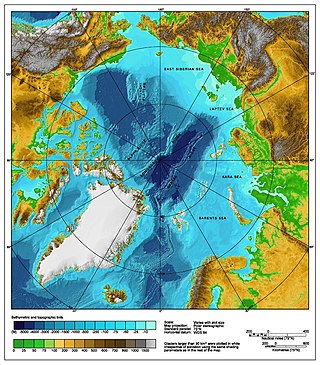
Arktika 2007 was a 2007 expedition in which Russia performed the first ever crewed descent to the ocean bottom at the North Pole, as part of research related to the 2001 Russian territorial claim, one of many territorial claims in the Arctic, made possible, in part, because of Arctic shrinkage. As well as dropping a titanium tube containing the Russian flag, the submersibles collected specimens of Arctic flora and fauna and apparently recorded video of the dives. The "North Pole-35" manned drifting ice station was established.

Sjuøyane is the northernmost part of the Svalbard archipelago north of mainland Norway, and some 20 km north of the eastern major island Nordaustlandet. The islands are the northernmost landmass reachable by normal means, being 1024.3 kilometers south of the North Pole. In comparison, Robert Falcon Scott started his ill-fated Terra Nova Expedition 1374 km from the South Pole. Many of the islands are named after English explorers, most notably Captain Nelson.

Rossøya, sometimes referred to as Ross Island in English, is an island located in the Arctic Ocean. It is a part of Sjuøyane, a group of islands in the Svalbard archipelago, some 20 km north of the coast of Nordaustlandet, Svalbard in Arctic Norway. Rossøya is located 100 m north-northwest of the somewhat larger island Vesle Tavleøya. The northern point of Rossøya, at 80° 49′ 44.41″ North, is the northernmost point in Svalbard, and thereby also in the Kingdom of Norway. The distance to the North Pole is 1024.3 kilometers, to Nordkapp on the Norwegian mainland 1084 km and to Pysen, off the southern tip of mainland Norway, 2580 km.

The first ever expedition to reach the Geographic South Pole was led by the Norwegian explorer Roald Amundsen. Himself and four other crew members made it to the geographical south pole on 14 December 1911,which would prove to be five weeks ahead of the competetive British party led by Robert Falcon Scott as part of the Terra Nova Expedition. Amundsen and his team returned safely to their base, and about a year later heard that Scott and his four companions had perished on their return journey.
Robert Fotherby was an early 17th-century English explorer and whaler. From 1613 to 1615 he worked for the Muscovy Company, and from 1615 until his death for the East India Company.

Nansen's Fram expedition of 1893–1896 was an attempt by the Norwegian explorer Fridtjof Nansen to reach the geographical North Pole by harnessing the natural east–west current of the Arctic Ocean. In the face of much discouragement from other polar explorers, Nansen took his ship Fram to the New Siberian Islands in the eastern Arctic Ocean, froze her into the pack ice, and waited for the drift to carry her towards the pole. Impatient with the slow speed and erratic character of the drift, after 18 months Nansen and a chosen companion, Hjalmar Johansen, left the ship with a team of Samoyed dogs and sledges and made for the pole. They did not reach it, but they achieved a record Farthest North latitude of 86°13.6′N before a long retreat over ice and water to reach safety in Franz Josef Land. Meanwhile, Fram continued to drift westward, finally emerging in the North Atlantic Ocean.
Major explorations of Earth continued after the Age of Discovery. By the early seventeenth century, vessels were sufficiently well built and their navigators competent enough to travel to virtually anywhere on the planet by sea. In the 17th century, Dutch explorers such as Willem Jansz and Abel Tasman explored the coasts of Australia. Spanish expeditions from Peru explored the South Pacific and discovered archipelagos such as Vanuatu and the Pitcairn Islands. Luis Vaez de Torres chartered the coasts of New Guinea and the Solomon Islands, and discovered the strait that bears his name. European naval exploration mapped the western and northern coasts of Australia, but the east coast had to wait for over a century. Eighteenth-century British explorer James Cook mapped much of Polynesia and traveled as far north as Alaska and as far south as the Antarctic Circle. In the later 18th century, the Pacific became a focus of renewed interest, with Spanish expeditions, followed by Northern European ones, reaching the coasts of northern British Columbia and Alaska.

Arctic exploration is the physical exploration of the Arctic region of the Earth. It refers to the historical period during which mankind has explored the region north of the Arctic Circle. Historical records suggest that humankind have explored the northern extremes since 325 BC, when the ancient Greek sailor Pytheas reached a frozen sea while attempting to find a source of the metal tin. Dangerous oceans and poor weather conditions often fetter explorers attempting to reach polar regions, and journeying through these perils by sight, boat, and foot has proven difficult.
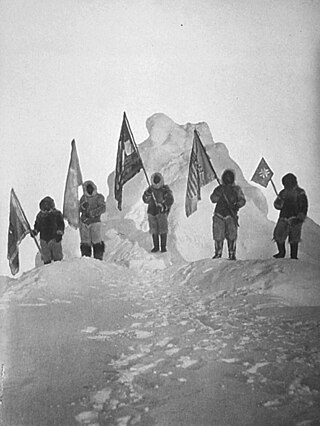
Polar exploration is the process of exploration of the polar regions of Earth – the Arctic region and Antarctica – particularly with the goal of reaching the North Pole and South Pole, respectively. Historically, this was accomplished by explorers making often arduous travels on foot or by sled in these regions, known as a polar expedition. More recently, exploration has been accomplished with technology, particularly with satellite imagery.
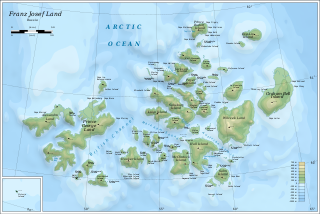
Franz Josef Land, an uninhabited archipelago located in the Arctic Ocean, Barents Sea and Kara Sea, may have been discovered by the 1865 expedition of the Norwegian sealing vessel Spidsbergen captained by Nils Fredrik Rønnbeck. However, the discovery was never announced and the existence of the territory only came to public notice following the Austro-Hungarian North Pole Expedition of 1872, which named the archipelago in honor of Franz Joseph I of Austria. Benjamin Leigh Smith led the next expedition in 1880, which continued the work of the first expeditions in investigating the southern and central parts of the archipelago. Concurrent expeditions followed in 1896, Nansen's Fram expedition and the Jackson–Harmsworth Expedition, which met by accident. These two journeys explored the northern area and the flanks of Franz Josef Land.
Cornelis Giles was a Dutch whaler, navigator, cartographer, and polar explorer.

















